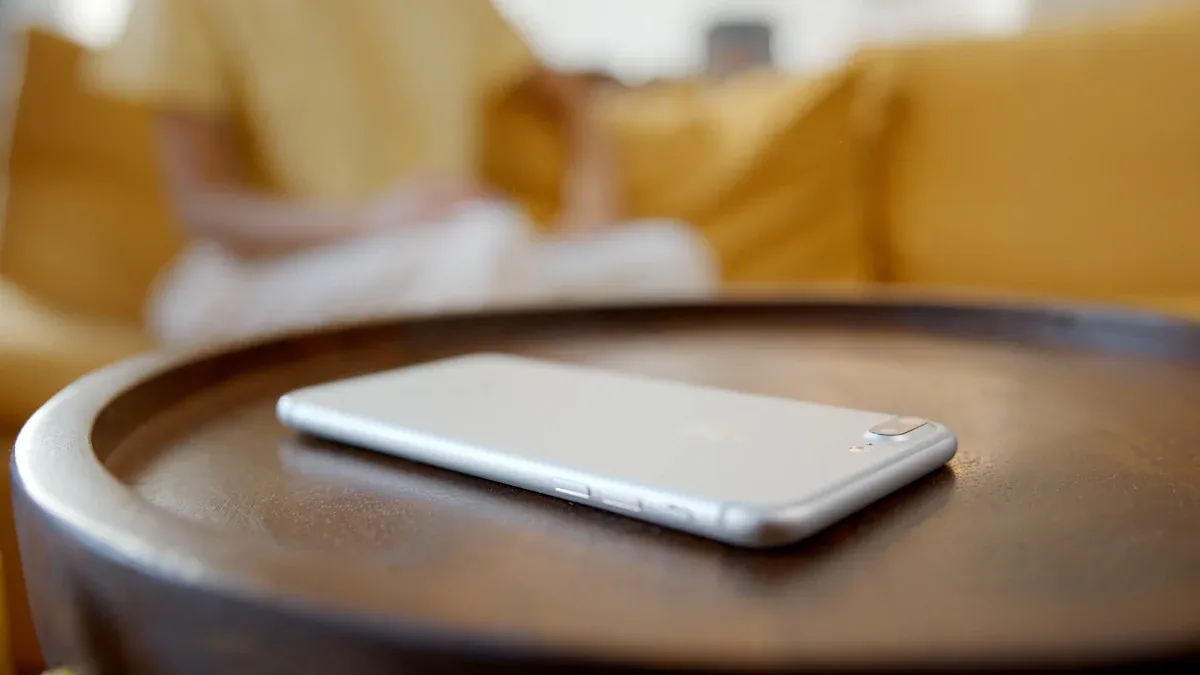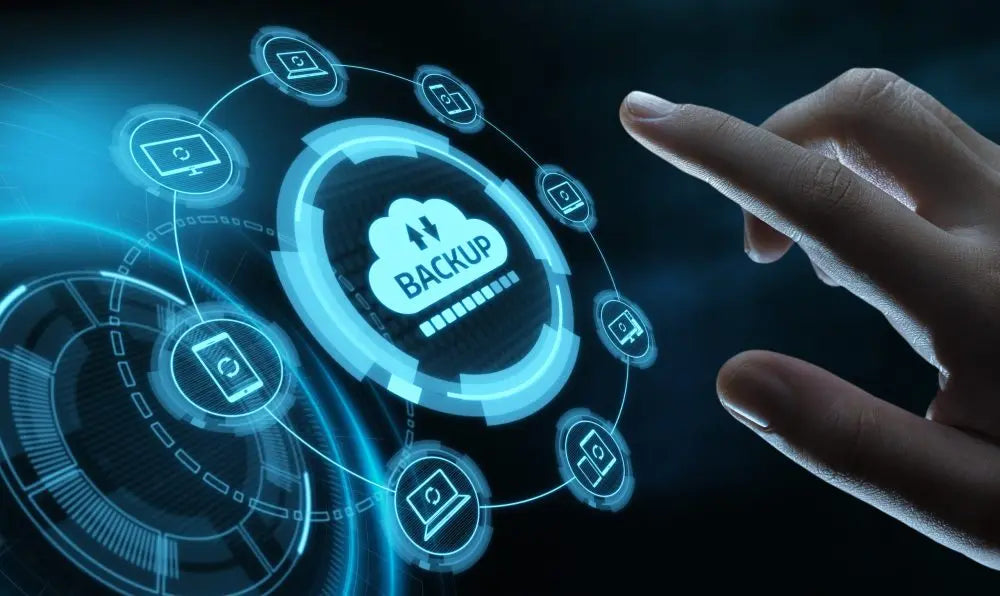How to Back Up Your iPhone Using iCloud or a Computer

Backing up your iPhone keeps your data safe from loss. You can store photos, contacts, and more using iCloud or a computer. iCloud lets you back up wirelessly. Computers give you a manual way to back up with more control. Both options help keep your information safe and easy to access.
Key Takeaways
- Back up your iPhone often to keep your data safe. Use iCloud for daily backups when your phone is charging and on Wi-Fi.
- Check your iCloud storage regularly. If it's almost full, upgrade to a paid plan or delete unneeded files so backups work.
- For more control and quicker backups, use a computer. This saves all your data without using iCloud and works well for big files.
How to Back Up Your iPhone Using iCloud
Check Your iCloud Storage
Make sure your iCloud has enough space for a backup. Apple gives 5GB of free storage, but this may not be enough. Photos, videos, and apps can take up a lot of space. To check your storage:
- Open the Settings app on your iPhone.
- Tap your name at the top to open Apple ID settings.
- Choose iCloud, then tap Manage Account Storage or Manage Storage.
If your storage is nearly full, you can upgrade to a paid plan. iCloud offers affordable plans to fit your needs.
Tip: Check your iCloud storage often to avoid running out of space.
Enable iCloud Backup
After confirming enough storage, turn on iCloud Backup to protect your data. Follow these steps:
- Open the Settings app on your iPhone.
- Tap your name and go to iCloud.
- Scroll down and select iCloud Backup.
- Turn on the iCloud Backup switch.
When this is on, iCloud backs up your iPhone daily. It works when your phone is on Wi-Fi, charging, and locked. This keeps your data updated without extra effort.
Start an iCloud Backup
You can start a backup manually to save your data right away. Here’s how:
- Go to Settings > [Your Name] > iCloud > iCloud Backup.
- Tap Back Up Now.
The backup might take a few minutes. The time depends on your data size and internet speed. Stay connected to Wi-Fi to avoid interruptions.
Many people forget to back up their iPhones. Studies show 1 in 3 iPhones could be lost, stolen, or damaged. Backing up now can save your data from being lost.
Verify Your Backup
After backing up, check to make sure your data is safe. To verify:
- Open Settings and tap your name.
- Go to iCloud > Manage Account Storage > Backups.
- Tap your device name to see backup details like date and size.
For extra safety, use methods like checksum or restoration verification. These methods confirm your backup is complete and ready to use.
| Verification Method | Description |
|---|---|
| Checksum Verification | Checks each file’s value to ensure it matches the original. |
| Restoration Verification | Restores backup data to test if it works properly. |
| Audit Verification | Reviews backup logs to find errors but doesn’t fully check data. |
Note: Verifying your backup ensures you can restore your data without problems during emergencies.
How to Back Up Your iPhone Using a Computer
Back Up Using Finder on macOS Catalina or Later
If your Mac runs macOS Catalina or newer, use Finder instead of iTunes. Follow these steps to back up your iPhone:
- Plug your iPhone into your Mac with a USB cable.
- Open Finder from your Dock or Applications folder.
- Find your iPhone under "Locations" in the Finder sidebar.
- Click the General tab in the main Finder window.
- Under "Backups," select Back up all of the data on your iPhone to this Mac.
- To protect your backup, check Encrypt local backup and create a password.
- Click Back Up Now to begin the process.
Tip: Local backups save everything, like photos, music, and apps. They restore faster than downloading from iCloud.
Using Finder gives you a full backup of your iPhone. It also avoids paying for extra iCloud storage.
Back Up Using iTunes on macOS Mojave or Earlier
If your Mac has macOS Mojave or older, use iTunes to back up your iPhone. Here’s how:
- Connect your iPhone to your Mac with a USB cable.
- Open iTunes. If it doesn’t open, find it in Applications.
- Click the device icon in the top-left corner of iTunes.
- Under "Summary," click Back Up Now to start the backup.
- To secure your backup, choose Encrypt local backup and set a password.
iTunes is a trusted way to back up your iPhone. It also encrypts your data for better security.
Back Up Using iTunes on Windows
Windows users can back up their iPhones using iTunes. The steps are similar to macOS Mojave. Follow these instructions:
- Download and install the latest iTunes from Apple’s website.
- Use a USB cable to connect your iPhone to your PC.
- Open iTunes and click the device icon in the top-left corner.
- Go to "Summary" and click Back Up Now.
- For extra security, enable Encrypt local backup and set a password.
Note: Windows saves backups on your computer’s hard drive. Make sure you have enough space before starting.
Verify Your Backup
After backing up, check to make sure your data is safe. Here’s how:
- Open Finder (macOS Catalina or later) or iTunes (macOS Mojave, earlier, or Windows).
- Select your iPhone and look for the Latest Backup section.
- Check the date and time to confirm it’s recent.
For extra safety, test your backup by restoring it to your iPhone or another device. This ensures the backup works and includes all your data.
Reminder: Regularly verifying your backup avoids surprises during emergencies. It ensures your data is always recoverable.
Comparing iCloud and Computer Backups
Benefits of iCloud Backups
iCloud backups are very easy to use. They save your data every day without you doing anything. This happens when your iPhone is on Wi-Fi, charging, and locked. iCloud also keeps your files updated on all Apple devices. You can quickly find or share your files anytime. It works well with Apple services, making file management simple.
Tip: Use iCloud backups if you want an easy way to protect your data.
Benefits of Computer Backups
Backing up to a computer gives you more control. It saves all your data, even things iCloud might miss. This method doesn’t use iCloud storage, so it can save you money. Computer backups are faster and don’t need the internet. They are great for saving large amounts of data.
| Feature | iCloud Backup | Computer Backup |
|---|---|---|
| Backup Speed | Slower, automatic daily backups | Faster, manual backups |
| Data Included | Limited data, excludes some items | More comprehensive data included |
| Storage Usage | Uses iCloud storage | Does not use iCloud storage |
| Convenience | Automatic, requires Wi-Fi and charger | Requires manual syncing |
| Frequency | Daily backups | Manual backups recommended monthly |
Note: Computer backups are best for people who want full control and offline storage.
Choosing the Right Backup Method
Pick the backup method that fits your needs. If you like easy and automatic updates, choose iCloud. If you want full backups and don’t mind doing it yourself, use a computer. Many people use both methods for extra safety. For example, use iCloud daily and a computer once a month.
Reminder: Always back up your data to keep it safe.
Saving a backup of your iPhone keeps your data safe. Use iCloud for automatic daily backups. Choose a computer for manual backups and offline storage. Backing up often keeps your data updated and secure. Using both methods gives extra safety. Check your storage space to prevent backup issues.
Tip: Using both iCloud and computer backups guarantees a dependable copy of your data.
FAQ
How often should you back up your iPhone?
You should back up your iPhone daily using iCloud for automatic updates. For computer backups, aim for at least once a month to ensure data safety.
Can you back up your iPhone without Wi-Fi?
Yes, use a computer to back up your iPhone. Connect your device via USB and follow the steps for Finder or iTunes to save your data offline.
What happens if your iCloud storage is full?
When iCloud storage is full, backups stop. Upgrade to a paid plan or delete unnecessary files like old backups, photos, or apps to free up space.







